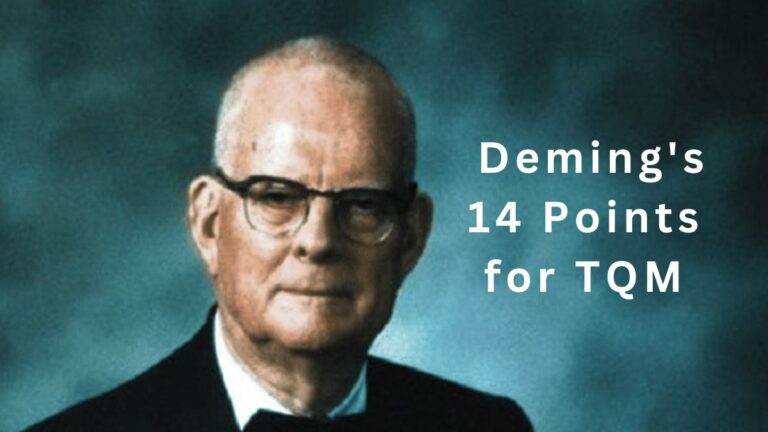What is a Team? Definition, Features, Types, Stages, and Strategies To Manage
What is a Team?
A team is a group of people having complementary skills who work together to achieve a common goal. Teams are special forms of groups of people with special and complementary skills.
All team members have a common goal, think of a football team – all members have the same goal i.e. to win the game, and everyone is sure that everyone will give their best efforts. Compatibility is essential in teamwork, everyone should be compatible to work together.
Teams are self-managed, self-guided, and self-supervised groups of employees devoted to achieving organizational goals through coordinated efforts and energy. They normally are responsible for formulating team goals, working procedures, and evaluation mechanisms.
Organizations create teams to increase performance, flexibility, and operation to achieve organizational objectives. So, team goals are supplemented and supportive of organizational goals.
An effective team is a good mix of high intellectual intelligence i.e. human resources available in the organization. Different types of teams, for example – functional teams, self-managed teams, problem-solving teams, cross-functional teams, and virtual teams are common in organizations to achieve the desired goals.
Characteristics of Team
Effective teams in the organization have the following characteristics.
- Teams include a group of people with complementary skills.
- Have a common goal.
- Mutual Accountability.
- There is open and two-way communication.
- Teams have compatibility.
- There is synergy through coordinated efforts.
- Teams have a practice of leadership.
- Teams are self-directing, autonomous, and self-managing.
- Effective feedback system.
- Mutual trust among members.
Related: Stages of Group Development
Types of Teams
Organizations form different work teams for different purposes as per requirements and to compete in today’s competitive business environment. Generally, the following four are the most popular teams in organizations.
Problem-Solving Teams
To address specific issues with the organization’s quality, effectiveness, productivity, and working environment, problem-solving teams are formed. These teams are comprised of knowledgeable workers or supervisors from the same departments since they are expected to offer solutions to problems.
Rarely do such teams have the power to put their recommendations into practice.
Self-Managed Teams
In general, self-managed teams are made up of 10 to 15 motivated individuals who work on interdependent, closely related tasks. These groups function without a manager.
Self-managed team members have the power to put their suggestions into action in addition to making comments to officials or problems. Fully self-managed teams determine their own objectives, establish performance standards, and evaluate one another’s work.
Cross-Functional Teams
Employees from various functional units or departments who are at the same hierarchical level work together to establish cross-functional teams. These teams meet frequently to solve challenging issues.
These teams may take a while to assemble and build trust, but they collaborate with more variety to achieve greater performance.
Virtual Teams
Experts from a variety of fields join virtual teams that are geographically dispersed but connected by computer technology. Through internet communication tools like WAN, video conferencing, and email, team members are connected.
These teams are becoming more and more common as boundaryless employment opportunities and reliable communication channels become increasingly prevalent.
Read Also: Autocratic Leadership Style
Stages of Team Development
Bruce Tuckman, a psychologist proposed the five-step process of team development. He explained how strange people come to form a team and ultimately create an effective one. Tuckman’s model of team development is also called the group development model. Let’s understand these stages.
Forming Stage
The forming stage is the first stage of team development. In this stage, people show a great desire to be a part of a team, they are excited to be accepted, and they strongly avoid the conflicts or controversies that may prevent them from participating in teams. Socialization is seen among members and they introduce each other.
Storming Stage
In the storming stage of team development, there is a great level of conflict among members. There are conflicts in terms of leadership, authority, responsibilities, roles, time to work, pay, etc.
A leader should be able to address the issues and solve them ASAP. As in the storming stage, members get to know more about the company and the people working their attitudes, goals, and interests clash.
Read Also: Authority Vs. Responsibility
Norming Stage
The norming stage is the most pleasing stage of team formation. Here, every member is aware of other members’ personalities, experiences, working styles, attitudes, etc. and everyone appreciates each other.
They show a great desire to create their teams a unique identity. They start to act as we and here a team is developed.
Performing Stage
It is the stage where teams devote their effort toward getting the job done. Here, now teams are fully matured and functioning. At this step, team productivity is higher. Members will be satisfied by fulfilling common goals. And, each member evaluates the performance of the teams.
Adjourning Stage
Adjourning also called deforming and mourning stage is the last step. In this stage teams’ goals are accomplished. Temporary teams are dissolved and permanent teams continue to work.
Usually, here once the team’s goals are achieved they are deformed. And, for a new goal to achieve, again new teams are formed by following the above-mentioned steps i.e. forming, storming, norming, and performing.
How To Manag a Team?
There may be different strategies according to different times and situations to manage teams effectively. Effective team management is desirable for the healthy growth of the organization.
A manager should be able to manage working teams in his organization. He should have knowledge about different strategies and ways to manage work teams. The following are the common strategies that may be fit for effective team management.
- The size of teams should be appropriate depending on the jobs to be performed, the nature of the job, the deadline, and the expected output.
- Each team should have a specific, challenging, achievable, clear, and acceptable goal to achieve.
- Management policies and practices should be fair and consistent.
- Each individual should have equal importance in the team’s performance.
- Conflicts should be managed effectively and transparently as possible.
- There should be adequate resources for teams.
- Managers and leaders should initiate to remove obstacles with the joint effort of each member.
- Managers and leaders must ensure coordination among team members. There should be a climate of trust and respect.
- Management must create an appropriate environment to express opinions and problems without fear. Team members should be encouraged to be flexible.
- Management should use positive motivation techniques and follow a participative leadership style.
- There should be a proper, timely, and participative feedback system for effective controlling of team effort and performance.
Difference Between a Team and a Group
A group is just a collection of two or more people, whereas, a team is a group of people who have a common objective to achieve.
Meaning that, although the groups also have a common objective to achieve, however, in groups, there may be or may not be common goals to achieve. But, in teams, a common goal to achieve is inherent.
Think of your friend circle as a group, you gather to celebrate and create fun, and all have common interests. But when you all get training, develop relevant skills, and work toward the accomplishment of the common goal, you are all now members of a team.
Read Next: Teams Vs. Groups
Sajan Kushmi is a content writer with more than 4 years of experience. He holds BIM Degree. He write on the topics related to Management, Marketing, and Entrepreneurship.






